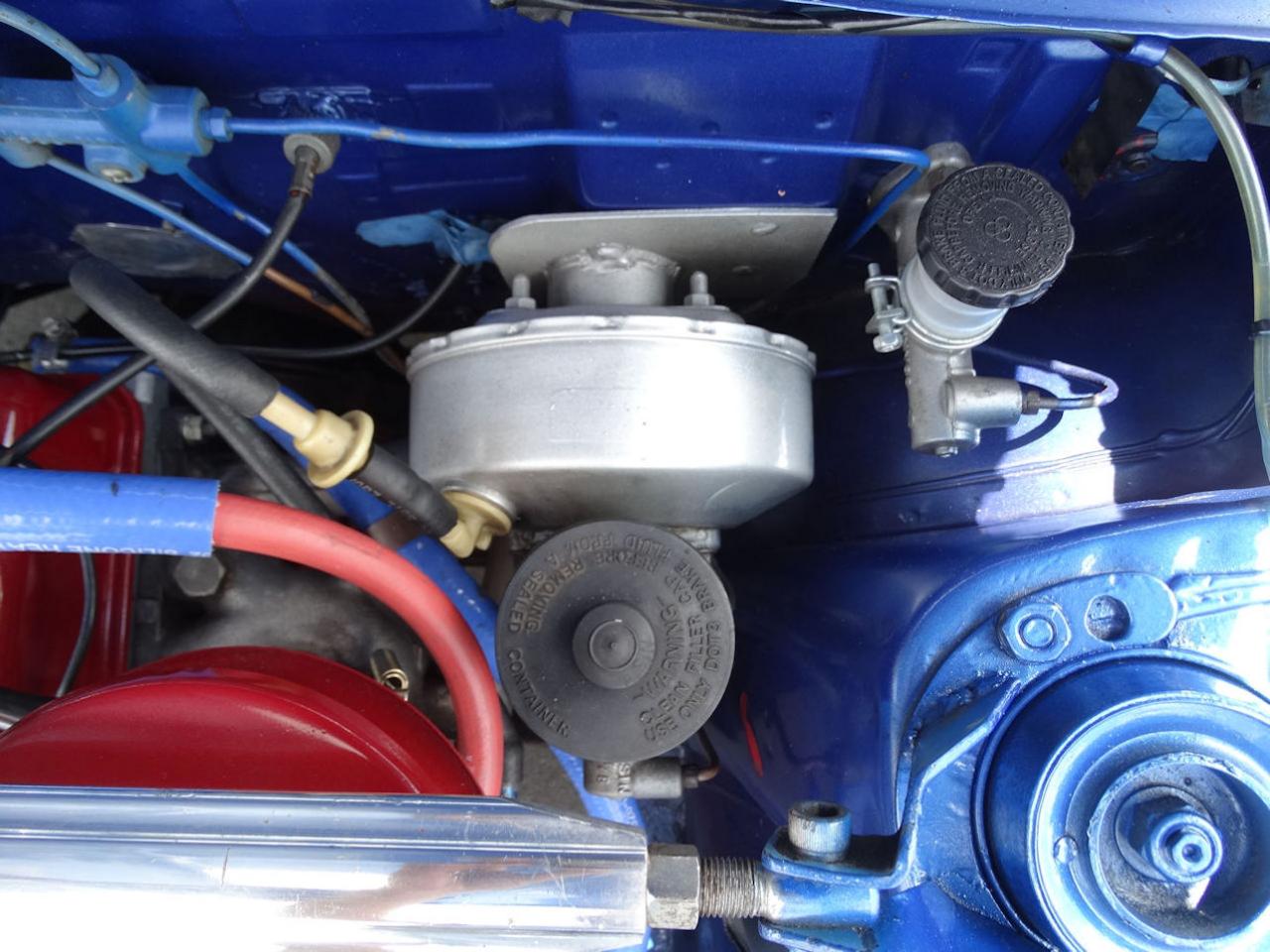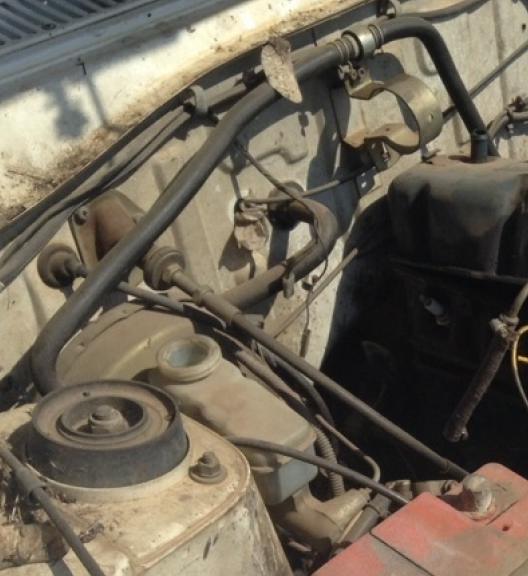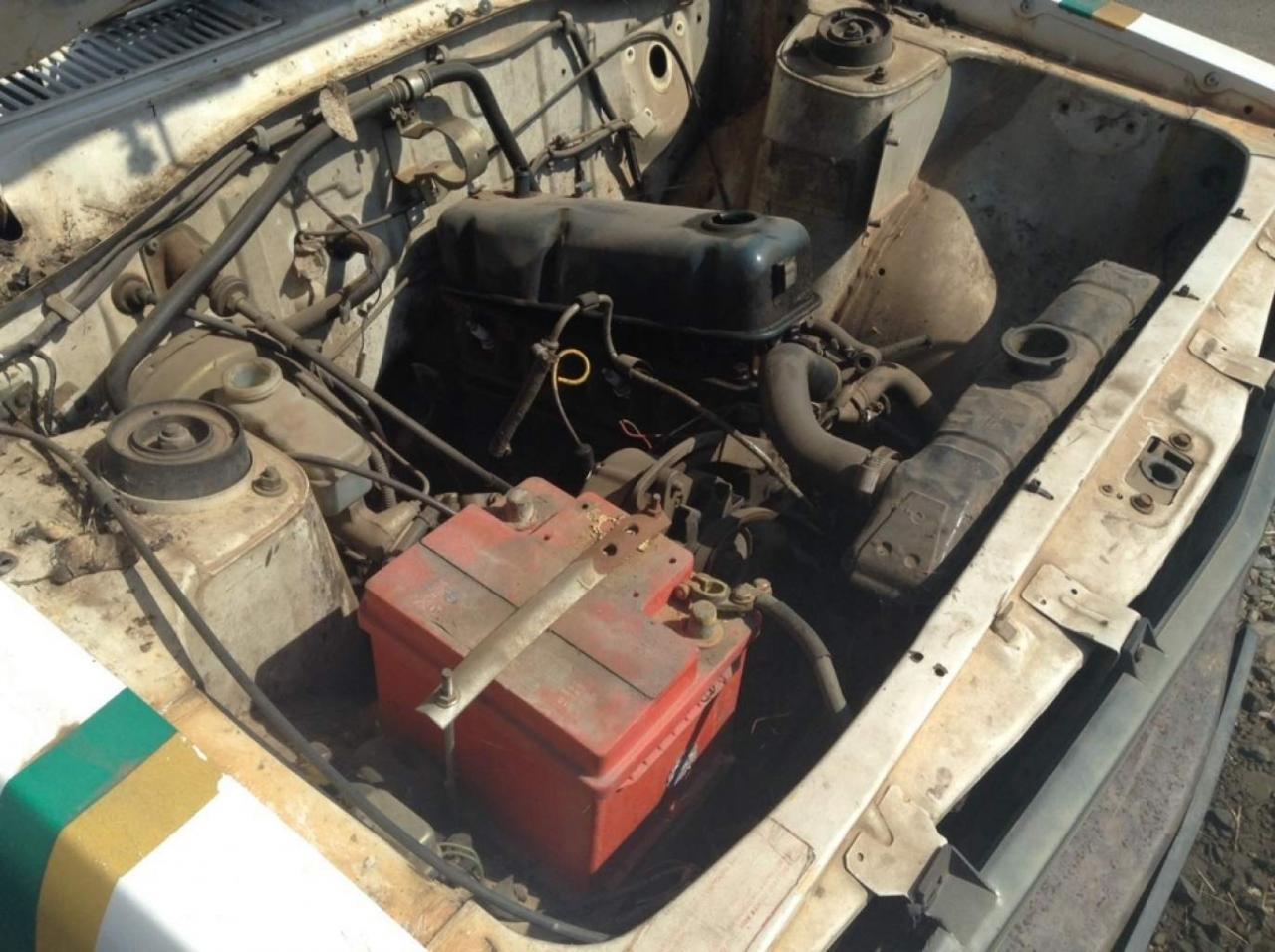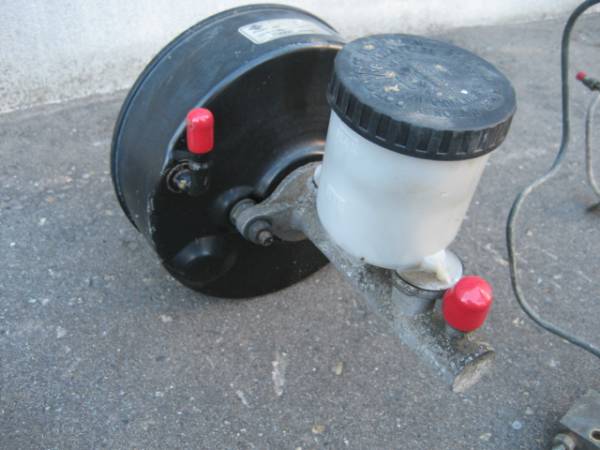| Revision as of 20:42, 12 October 2018 ddgonzal (Talk | contribs) (->Overview) <- Previous diff |
Current revision ddgonzal (Talk | contribs) (->Testing) |
||
| Line 22: | Line 22: | ||
| {{Album|26701}} {{Album|26702}} | {{Album|26701}} {{Album|26702}} | ||
| + | |||
| + | = PB110 Booster = | ||
| + | The [[PB110]] 1400 used what appear to be the same small-diameter [[B210 Brake Booster]] (M45 Master-Vac with 4.5 inch vacuum diaphragm). | ||
| + | |||
| + | {{UploadPost|174_65ad9286b902f.jpg|498203}} | ||
| = Testing = | = Testing = | ||
Current revision
A brake booster was first fitted to Datsun 1200 starting in October 1989. The Datsun 1200 is so light it does not take much leg pressure to stop. The booster means that less exertion is needed by the driver to press the pedal. The booster doesn't make the brakes stop quicker, but instead lets a small person press as hard as a muscleman.
Also see: Brake Booster Swaps
Contents |
Overview
Booster system was fitted to JDM 1200 1990-1994, Bakkie 1986-2008, and LHD 1200 1986-up

The booster uses this large single-reservoir Brake master cylinder, which uniquely has two horizontally aligned bolt holes. Other Datsun 1200 master cylinder have two bolts in vertical alignment. It has separate front & rear brakes though sharing a common fluid reservoir.
Nissan 1400
Booster was used in South Africa B140 pickup starting in 1986. It uses a different master cylinder from the Japan-assembled pickup.
PB110 Booster
The PB110 1400 used what appear to be the same small-diameter B210 Brake Booster (M45 Master-Vac with 4.5 inch vacuum diaphragm).
Testing
Compared to a non-booster setup, the booster type will allows feel spongier. Even so, when the brake system is bled properly a booster type will feel fine (like any brake booster equipped car).
One simple test you can do is: Run engine for 60 seconds to build normal vacuum. Then turn engine OFF, pump the brakes until the booster loses vacuum. The pedal should get higher and tighter with each pump. All sponginess should go away after four pumps or so -- which indicates the brake hydraulics are OK. If it doesn't remove all sponginess, re-bleed the brakes. If the pedal travel does not change with the first few pumps (pedal does not get higher) then the booster is bad.
Vacuum Test
With engine OFF, pump the brake pedal until it gets high and tight. The press and hold the pedal down while starting the engine. The pedal should move down slightly. If there is no change to the pedal height, something is wrong in the vacuum circuit.
Leak Test
Engine RUNNING, press and hold down brake pedal. Turn engine OFF. Keep pressure on it for 30 seconds. The pedal should stay down. If pedal comes up a bit, something is wrong.
Parts
47210-G1500 BOOSTER ASSY-BRAKE 9810- * superceded by 47210-G1510 47212-D0100 PACKING-BOOSTER [4-bolt boster-to-firewall gasket] 47471-G1500 HOSE-BOOSTER [from booster to check valve] 47478-03B00 VALVE ASSY-CHECK 47472-95W00 HOSE-BOOSTER [from check valve to intake manifold] 47475-H8504 CONNECTOR-BOOSTER HOSE [intake manifold fitting]
46010-G1500 CYLINDER ASSY-BRAKE MASTER 8910-


ブレーキ

![[Datsun 1200 encyclopedia]](/wiki/upload/wiki.png)












